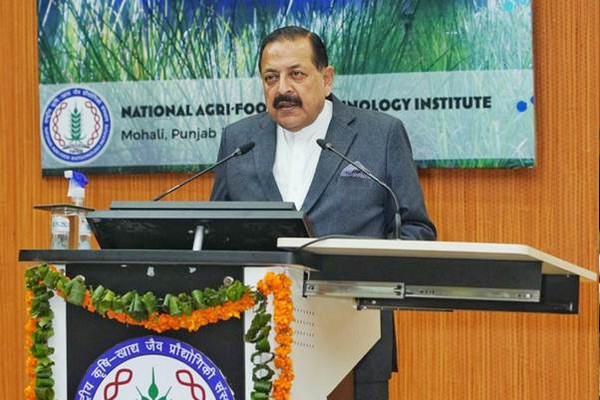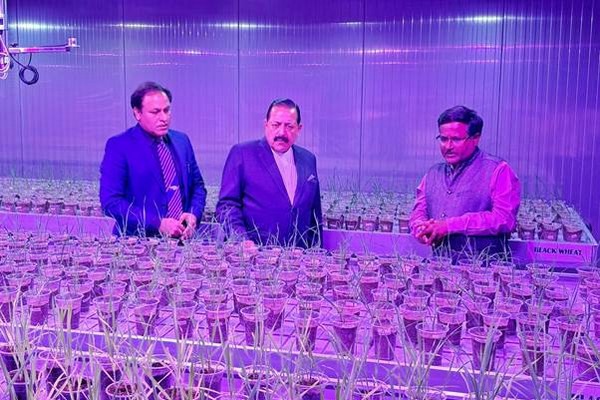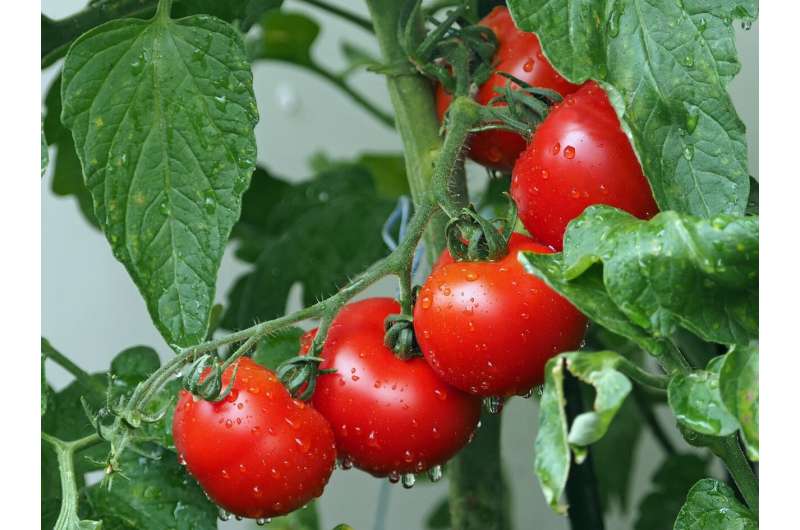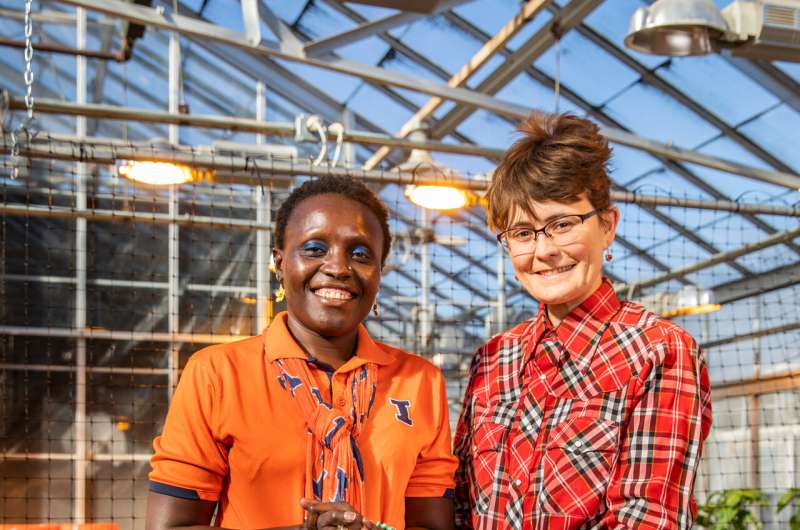| United Kingdom – Plant breeders to benefit from online research toolsSelect April 3, 2024  An exciting new project will look to put cutting-edge research tools in the hands of plant breeders, providing access to genomic resources to accelerate the development of more resilient and climate-resistant crops.The collaboration brings together the collective expertise of the Earlham Institute, IBM Research, the Science and Technology Facilities Council (STFC) Hartree Centre, and RAGT Seeds UK with the aim of simplifying and speeding up the transition of cutting-edge genome research tools, workflows, and software into industrial applications.The one-year Excelerate project is part of the Hartree National Centre for Digital Innovation (HNCDI) programme from STFC designed to close the gap between academic and industrial applications of digital technologies – such as artificial intelligence (AI) and quantum computing.The UK is home to some of the most exciting and innovative life science research. Institutions are pioneering the use of new technologies to overcome issues of scale and complexity in data-intensive bioscience, such as developing approaches that could be used to accelerate crop breeding in line with EU safety and ethical regulations.At the Earlham Institute, this includes crop pangenomes and the tools required to analyse them, developed through its Decoding Biodiversity strategic programme – funded by the Biotechnology and Biological Sciences Research Council (BBSRC), part of UKRI.But the transition of this knowledge into usable technology – and its uptake by industry – remains a significant challenge.“Modern plant breeding practices are based on understanding and then using genetic resources – made possible by digital innovations – that breeders can incorporate into their programmes,” Professor Anthony Hall, project lead and Head of Plant Genomics at the Earlham Institute explained.“Bioinformatics and machine learning techniques are playing an increasingly important role in deciphering genetic diversity. But they bring significant overheads in terms of the bioinformatics skills and computing power required to develop and implement new workflows.”The plant breeding industry has a crucial role to play in addressing the global challenges of food security, water conservation, and net zero. To realise the enormous potential of UK science and innovation, initiatives are needed to bridge the gap between research and industry.This new project brings together leaders from academia and industry to provide cloud-based tools that can be easily adopted by the plant breeding companies to support the development of next-generation crops with greater climate resilience and improved nutritional properties.The Earlham Institute is working with IBM Research and STFC to develop new cloud-based tools – including those optimised for exploring plant pangenomes – which RAGT Seeds UK will be road testing.“The Earlham Institute is home to some amazing research infrastructure, innovation, and expertise,” says Professor Hall. “This helps us to develop the technology needed to answer the big questions that will be critical in addressing urgent global challenges, such as how we find new sources of diversity for breeding more resilient crops.”  The project team from left to right: Robin Kennedy Reid, STFC, Rachel Rusholme-Pilcher, Earlham Institute, Laura Jayne-Gardiner, IBM Research, Will Davies, STFC, Anthony Hall, Earlham Institute, Chris Burt, Heidi Town, and John Baison, RAGT Seeds UK. Dr Rachel Rusholme-Pilcher is a Senior Postdoctoral Researcher at the Earlham Institute, and has played a central role in developing the workflows that will be used in this partnership.“The tools we’re developing and optimising will allow plant breeders to interact with their complex datasets in a way they simply couldn’t before,” explained Dr Rusholme-Pilcher. “It should provide new information they can rapidly incorporate into their existing breeding programmes.“We’ll also be using this project to look at how we can embed the adoption of FAIR approaches – the movement to make all research data Findable, Accessible, Interoperable, and Reusable. Making this kind of research FAIR can be a challenge but these collaborations will hopefully change that – transforming the impact of emerging technologies.”Excelerate is one strand of a number of projects from HNCDI embedding AI solutions across UK industry. To both accelerate and simplify the adoption of compute intensive bioinformatics workflows in the plant breeding industry, this project will use an on-demand, scalable, Hybrid Cloud delivery model.Dr Laura-Jayne Gardiner, Senior Research Scientist at IBM Research, said: “Our HNCDI Excelerate projects are enabling businesses to adopt new technologies – including artificial intelligence and hybrid cloud – to overcome industrial challenges, such as allowing complex biological data analytics at increased scale and speed.”Robin Kennedy-Reid, Senior Research Software Engineer at the STFC Hartree Centre, said: “At the Hartree Centre, we use applied research and innovation to turn good ideas into industry-ready solutions for long-term societal and economic impact. This is made possible by working with a network of partners, both industry and academic leaders, as well as drawing on the work of open source communities like nf-core.“In this project, this will deliver new bioinformatics and machine learning capability to the plant breeding industry; with a view to assisting the search for more sustainable wheat varieties.”Dr John Baison, Cereals Research and Genomics Manager at RAGT Seeds UK, said: “Genome-based breeding holds promise for expediting wheat breeding, aiming to ensure sustainable wheat production by creating high-yielding, climate-resilient cultivars with superior nutritional quality.“The plant-breeding sector is positioning to confront these targets by leveraging the dynamic UK research community. However, bridging the gap between research and industry is crucial for optimising the potential of UK science and innovation.“As RAGT delves deeper into genomics activities, it has become increasingly evident that we must harness advanced computing tools to navigate the vast amounts of data generated from genetics and genomics projects. RAGT is excited to be at the forefront of this collaborative effort, which could revolutionise the application of genomics to plant breeding.” More news from: . Earlham Institute . RAGT Seeds Limited Website: http://www.earlham.ac.ukPublished: April 3, 2024 |
| The news item on this page is copyright by the organization where it originated Fair use notice |
| United Kingdom – Plant breeders to benefit from online research toolsSelect April 3, 2024  An exciting new project will look to put cutting-edge research tools in the hands of plant breeders, providing access to genomic resources to accelerate the development of more resilient and climate-resistant crops.The collaboration brings together the collective expertise of the Earlham Institute, IBM Research, the Science and Technology Facilities Council (STFC) Hartree Centre, and RAGT Seeds UK with the aim of simplifying and speeding up the transition of cutting-edge genome research tools, workflows, and software into industrial applications.The one-year Excelerate project is part of the Hartree National Centre for Digital Innovation (HNCDI) programme from STFC designed to close the gap between academic and industrial applications of digital technologies – such as artificial intelligence (AI) and quantum computing.The UK is home to some of the most exciting and innovative life science research. Institutions are pioneering the use of new technologies to overcome issues of scale and complexity in data-intensive bioscience, such as developing approaches that could be used to accelerate crop breeding in line with EU safety and ethical regulations.At the Earlham Institute, this includes crop pangenomes and the tools required to analyse them, developed through its Decoding Biodiversity strategic programme – funded by the Biotechnology and Biological Sciences Research Council (BBSRC), part of UKRI.But the transition of this knowledge into usable technology – and its uptake by industry – remains a significant challenge.“Modern plant breeding practices are based on understanding and then using genetic resources – made possible by digital innovations – that breeders can incorporate into their programmes,” Professor Anthony Hall, project lead and Head of Plant Genomics at the Earlham Institute explained.“Bioinformatics and machine learning techniques are playing an increasingly important role in deciphering genetic diversity. But they bring significant overheads in terms of the bioinformatics skills and computing power required to develop and implement new workflows.”The plant breeding industry has a crucial role to play in addressing the global challenges of food security, water conservation, and net zero. To realise the enormous potential of UK science and innovation, initiatives are needed to bridge the gap between research and industry.This new project brings together leaders from academia and industry to provide cloud-based tools that can be easily adopted by the plant breeding companies to support the development of next-generation crops with greater climate resilience and improved nutritional properties.The Earlham Institute is working with IBM Research and STFC to develop new cloud-based tools – including those optimised for exploring plant pangenomes – which RAGT Seeds UK will be road testing.“The Earlham Institute is home to some amazing research infrastructure, innovation, and expertise,” says Professor Hall. “This helps us to develop the technology needed to answer the big questions that will be critical in addressing urgent global challenges, such as how we find new sources of diversity for breeding more resilient crops.”  The project team from left to right: Robin Kennedy Reid, STFC, Rachel Rusholme-Pilcher, Earlham Institute, Laura Jayne-Gardiner, IBM Research, Will Davies, STFC, Anthony Hall, Earlham Institute, Chris Burt, Heidi Town, and John Baison, RAGT Seeds UK. Dr Rachel Rusholme-Pilcher is a Senior Postdoctoral Researcher at the Earlham Institute, and has played a central role in developing the workflows that will be used in this partnership.“The tools we’re developing and optimising will allow plant breeders to interact with their complex datasets in a way they simply couldn’t before,” explained Dr Rusholme-Pilcher. “It should provide new information they can rapidly incorporate into their existing breeding programmes.“We’ll also be using this project to look at how we can embed the adoption of FAIR approaches – the movement to make all research data Findable, Accessible, Interoperable, and Reusable. Making this kind of research FAIR can be a challenge but these collaborations will hopefully change that – transforming the impact of emerging technologies.”Excelerate is one strand of a number of projects from HNCDI embedding AI solutions across UK industry. To both accelerate and simplify the adoption of compute intensive bioinformatics workflows in the plant breeding industry, this project will use an on-demand, scalable, Hybrid Cloud delivery model.Dr Laura-Jayne Gardiner, Senior Research Scientist at IBM Research, said: “Our HNCDI Excelerate projects are enabling businesses to adopt new technologies – including artificial intelligence and hybrid cloud – to overcome industrial challenges, such as allowing complex biological data analytics at increased scale and speed.”Robin Kennedy-Reid, Senior Research Software Engineer at the STFC Hartree Centre, said: “At the Hartree Centre, we use applied research and innovation to turn good ideas into industry-ready solutions for long-term societal and economic impact. This is made possible by working with a network of partners, both industry and academic leaders, as well as drawing on the work of open source communities like nf-core.“In this project, this will deliver new bioinformatics and machine learning capability to the plant breeding industry; with a view to assisting the search for more sustainable wheat varieties.”Dr John Baison, Cereals Research and Genomics Manager at RAGT Seeds UK, said: “Genome-based breeding holds promise for expediting wheat breeding, aiming to ensure sustainable wheat production by creating high-yielding, climate-resilient cultivars with superior nutritional quality.“The plant-breeding sector is positioning to confront these targets by leveraging the dynamic UK research community. However, bridging the gap between research and industry is crucial for optimising the potential of UK science and innovation.“As RAGT delves deeper into genomics activities, it has become increasingly evident that we must harness advanced computing tools to navigate the vast amounts of data generated from genetics and genomics projects. RAGT is excited to be at the forefront of this collaborative effort, which could revolutionise the application of genomics to plant breeding.” More news from: . Earlham Institute . RAGT Seeds Limited Website: http://www.earlham.ac.ukPublished: April 3, 2024 |
| The news item on this page is copyright by the organization where it originated Fair use notice |




